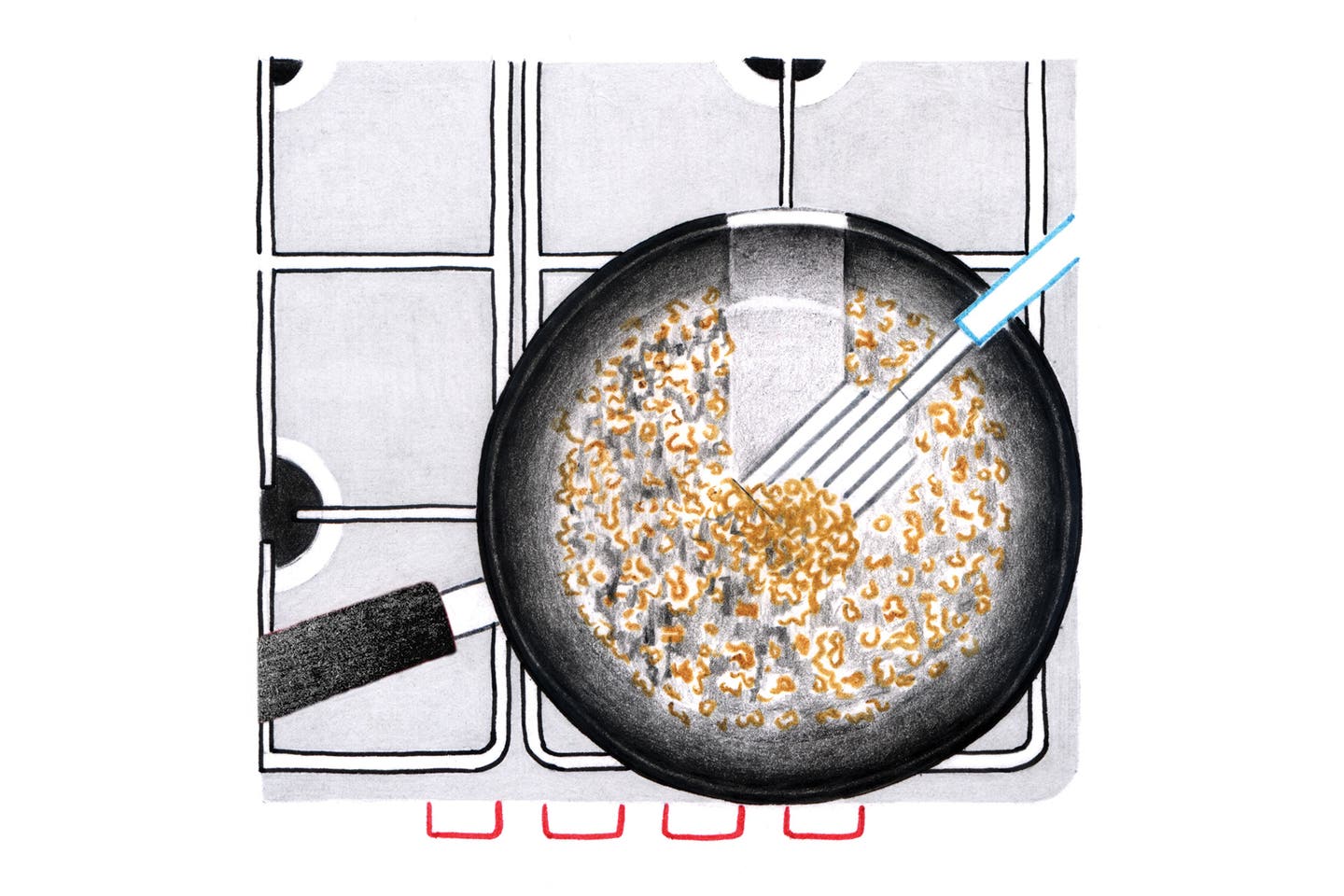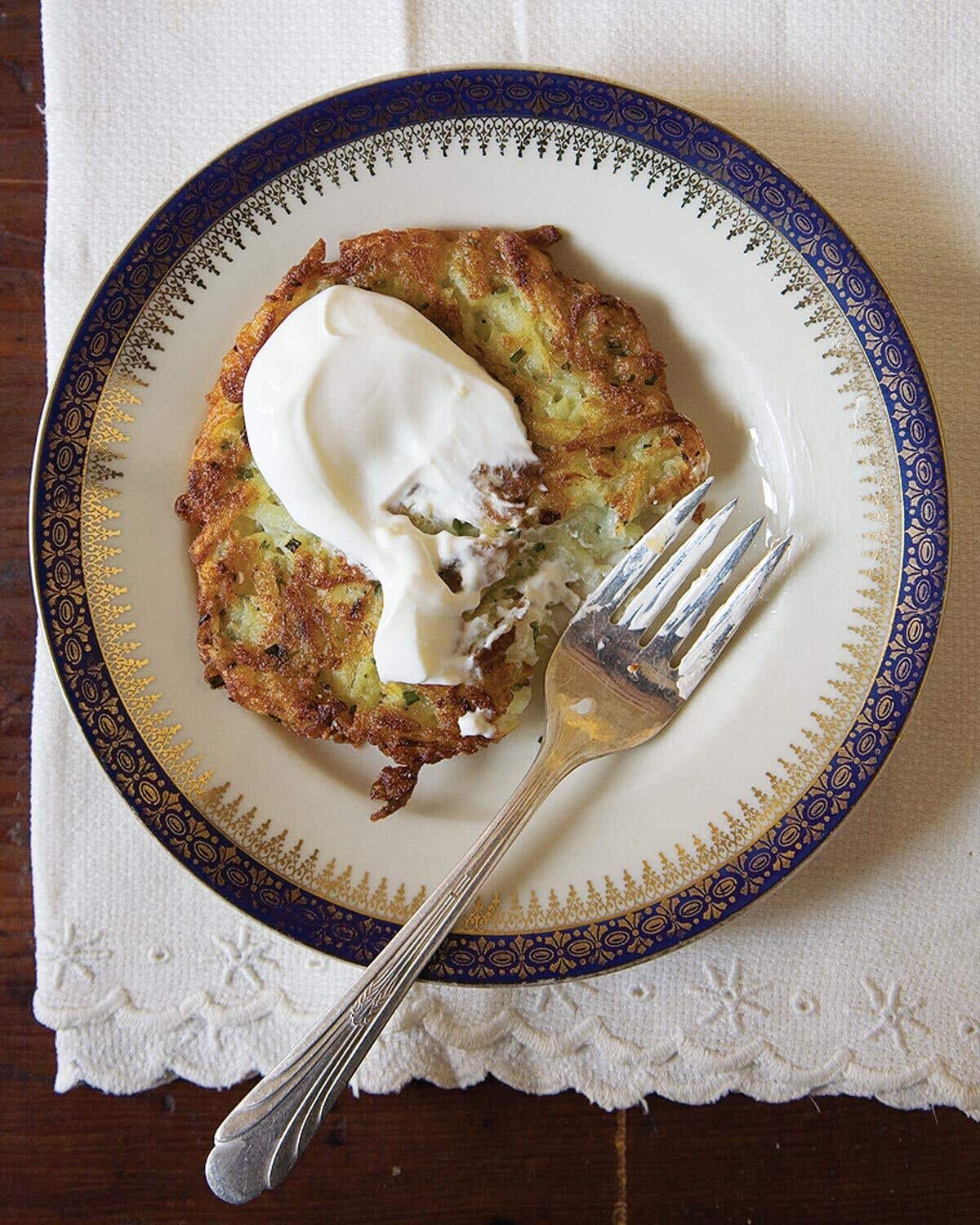
In Praise of Schmutz & Schnibbles
On the importance of the dark and sticky bits at the bottom of the pan
Good cooking, like good living, involves a little risk.
Sure, we must learn how to control the heat, and cut with some sort of precision. But once that's down, it's time to start bending the rules, selectively. The best cooks I know let out their own reins and cook intuitively. They flirt with the dark, the crusty, the nearly-too-far-gone.
Most of my favorite dishes teeter on the brink of burnt. I love, for example, when the mahogany edges of a pan-fried steak leave an imprint on the pan, or the seared scallop wears an espresso-colored crown, or when that bit of chopped garlic shrinks in the sizzling oil like a gold star about to burn out, its flavor fully exhaled into the oil. This point of doneness is better known as the peak of perfection, but let's call it what it really is: the edge of ruin.
My mom intuitively knew about cooking on the brink. She watched the bottoms of pots like a hawk watches a forest floor. I remember her aiming her spoon at the prized brown bits left after frying pork chops or chicken. These she dubbed the “schnibbles.”
As in: “See how the chicken skin sticks to the bottom of this heavy pan? That's good schnibbles.” From these tiny, salty meteors left behind, she built her luscious gravy. She taught me that if you were going to go from “sauté to sauce,” you had to use a metal pan—and not Teflon, but something with a semi-stick bottom. A generation back, her mother, Grandma Dion, had another word—“schmutz”—for the prized bits she'd shuttle to one side of the pan with a bent spatula, as if culling precious stones from a rubbly iron creek bed. As in: “Burn the schmutz and it's all downhill!”
This was confirmed when I hit professional kitchens, where my tutelage down in the pan hollows continued. At David Bouley's Danube, my first line-cooking gig in Manhattan, fellow cooks taught me how to properly add the tomato paste, common to the goulashy braises of the place: "No, no, no, you don't just add it to the caramelized veg and deglaze. You have to cook it until it lays down a copper film on the bottom of the pan. Until it clings." Sure enough, a few minutes after I added a lump of tomato paste, it obediently left a bright, fake-tan-like patina on the bottom of the pan. Only then was I to add the sweet and hot paprika, stirring until the powder softly detonated—or "bloomed"—in the hot fat, and finally, the deglazing liquid. I learned that 10 minutes of careful attention paid to the pan bottom created about 90 percent of the flavor of the finished goulash.
We called this flavor base the "fond," a corruption of the French fondation, but we were wrong: Fond refers to the liquid from deglazing. The French slang for schnibbles is sucs, derived from the Latin for sugar—or, basically, the "sap of the meat." And the link to sugar here is key: Even in savory foods, chefs are always working to bring the natural sugars present in the vegetable, the protein, or the shellfish up to the surface. This is why we roast Brussels sprouts, and grill shrimp, and pan-fry pork chops….
A few years after Danube, I cooked at an upscale Chinese place where the wok line was jet-fired. The woks got so hot that when the cut ingredients hit the bottom, they skittered around as if alive. The cooks kept everything constantly moving; anything standing in one spot would have darkened immediately. At the end they added a little liquid, and the entire dish, flipping in the air in waves, was imbued with what cookbook author Grace Young calls “the fiery breath of the wok.” There were no visible schnibbles in this Chinese kitchen, but high heat, a thin film of pure bottom flavor, and the cook's courage made for unmistakable pan schmutz.
That crusty bottom, I came to believe, is where the soul of the dish resides, in any cuisine. The deeper I delved into the details of cooking—cooking on the line in fine dining restaurants, developing my own style, writing a cookbook—the more I realized that my most successful recipes led me right back to the schnibble-filled pans of my childhood.
About those names: Schmutz? Schnibbles? Such an important part of the craft, and that's all the cooking vernacular gives us? Then again, why not? Maybe it's fine, even appropriate, to nickname your crusty bits. It's a personal place, that bottom of the pan.
Amy Thielen is a recovering professional cook, a TV host, and the James Beard Award-winning author of The New Midwestern Table.
Keep Reading
Continue to Next Story










